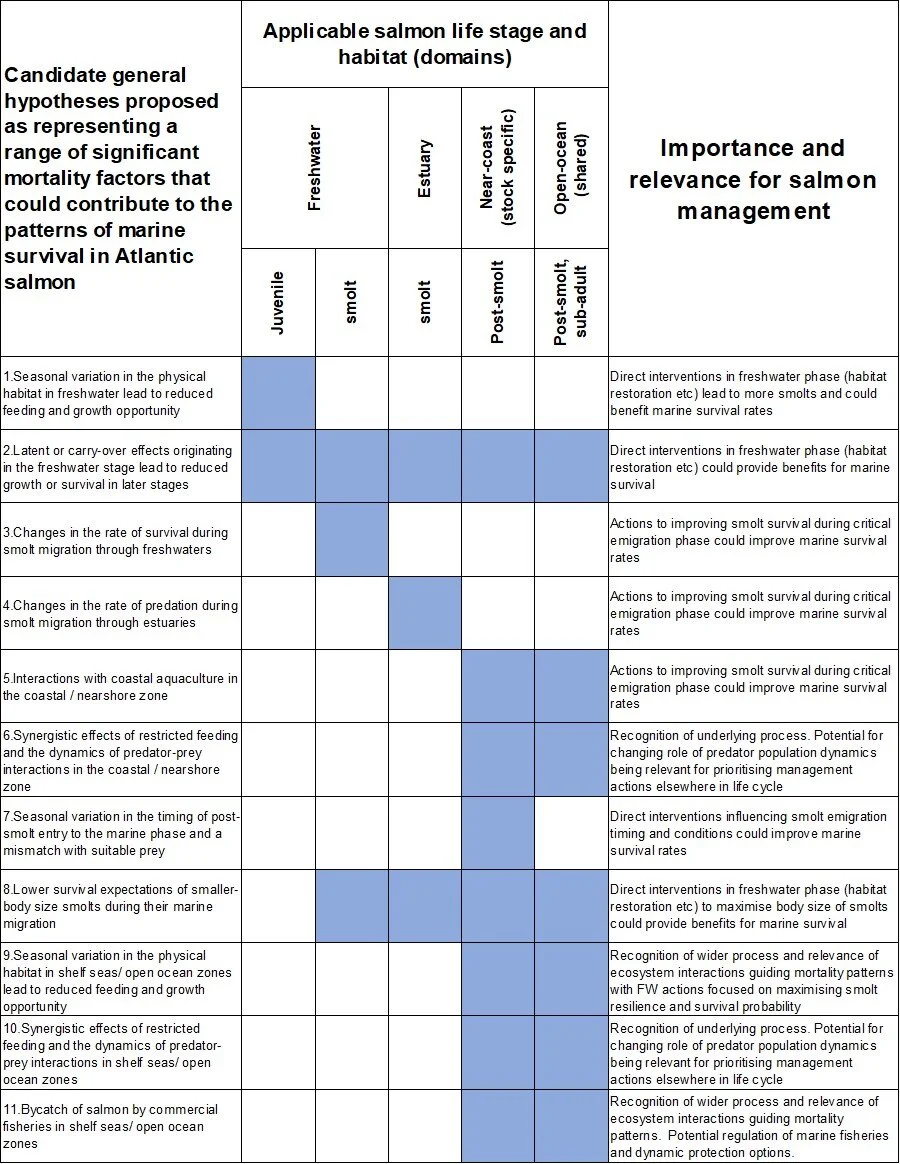
Key Mortality Questions: Hypotheses
Developing a priority list of hypotheses relating to salmon mortality
Estimated abundance of Atlantic salmon at sea across all three North Atlantic Salmon Conservation Organisation (NASCO) administrative regions (Figure 1, shown as modelled Pre-Fishery Abundance: PFA) illustrates a general downward trend across recent decades, with similar sharp declines around 1989 in North American Commission and North Atlantic Commission southern stocks.
Figure 1. Trends in Atlantic salmon Pre-fishery Abundance for the three NASCO administrative regions representing major continental stock groupings (data from ICES WGNAS reports).
To advance international efforts to uncover the reasons for these downward trends in salmon abundance, the MSA Likely Suspects Framework team has been trying to focus scientific efforts onto identifying a group of key hypotheses relating to possible drivers of salmon mortality.
In early November 2020, a group of candidate hypotheses statements suggesting possible drivers and mechanisms responsible for declines in salmon abundance were circulated to a group of international experts with the aim of capturing opinion on the plausibility and realism of the proposed mechanisms The hypotheses were evaluated on the basis of three attributes: their geographical extent, their possible effect, size, and their concordance with trends in salmon populations.
This process provides a focus for collective scientific attention with regard to possible avenues of research, and supports the ongoing efforts of a series of workshops led by NASCO and ICES on salmon mortality at sea (https://nasco.int/wp-content/uploads/2020/08/ICES-wksalmon_2019.pdf ). Collating the responses from the expert group resulted in the narrowing down from 35 to 11 candidate hypotheses statements, and represents a considerable step forward in facilitating a more rigorous scientific appraisal of this priority subset. The set of 11 priority candidate hypotheses statements are stated in the table below, together with their applicability to key parts of the salmons’ life cycle.
In parallel, the MSA Likely Suspects Framework team is identifying, mobilising and matching up available data resources, as well as synthesizing new data to develop a shared resource to facilitate testing of these priority hypotheses.




